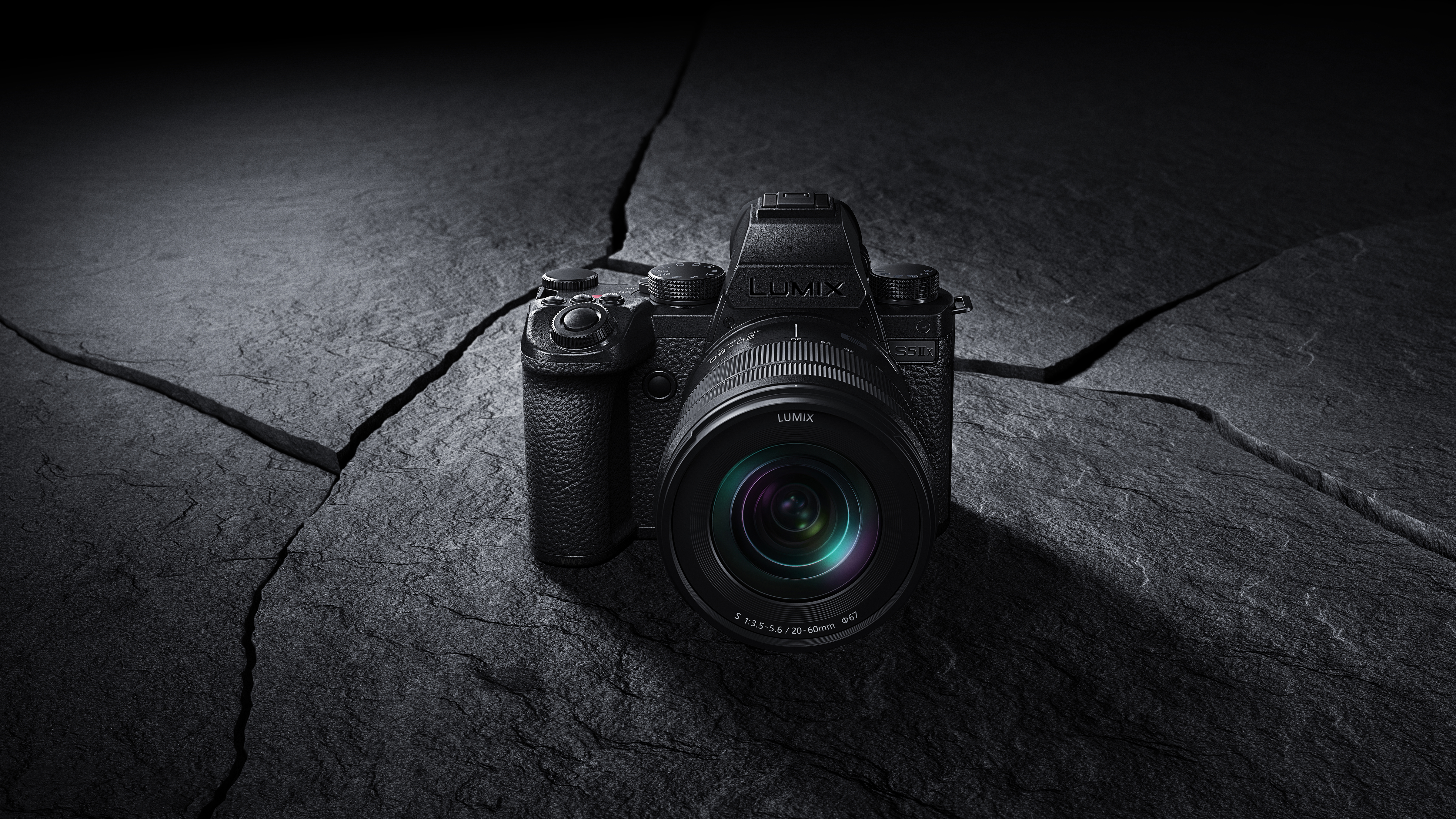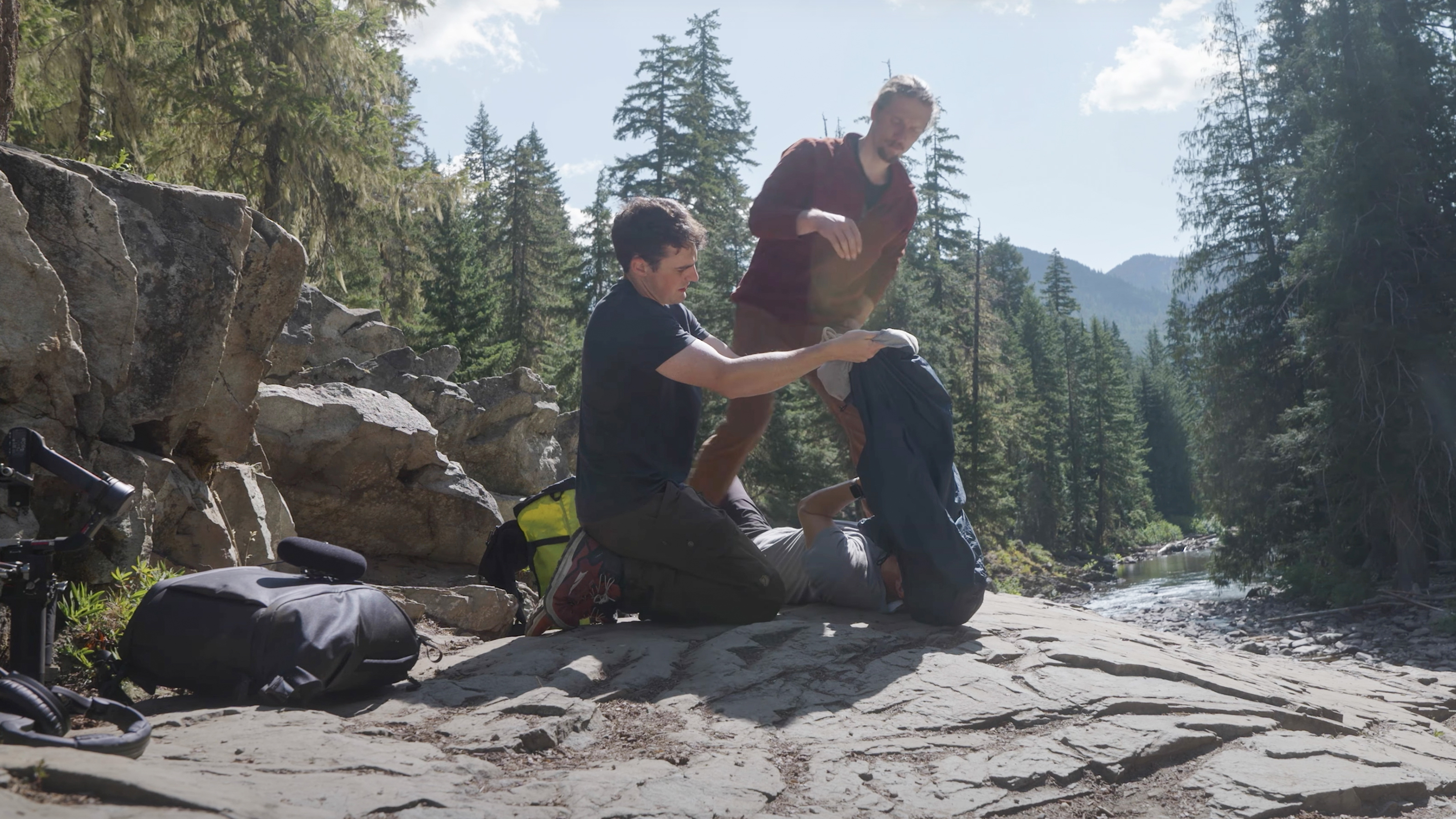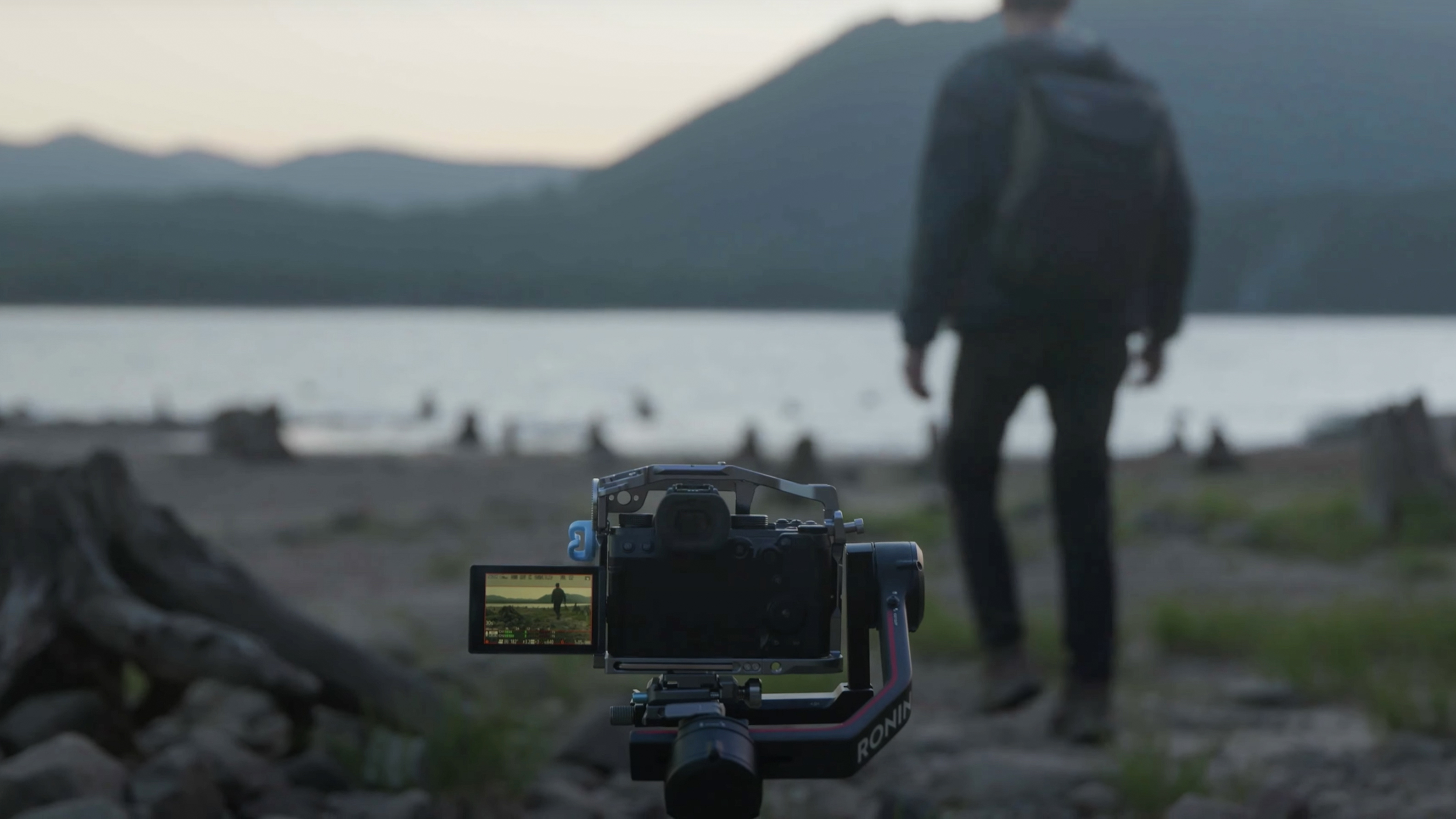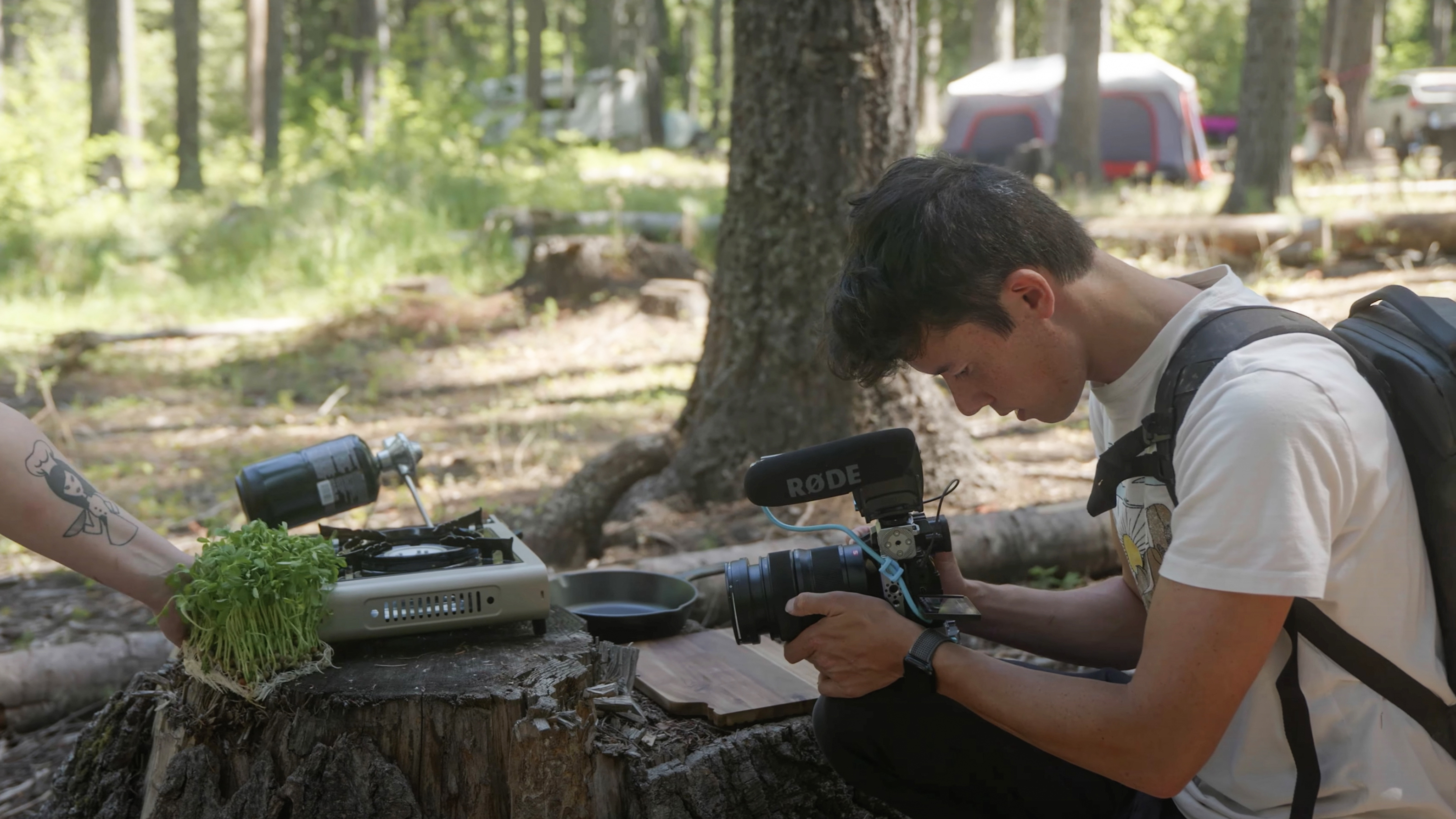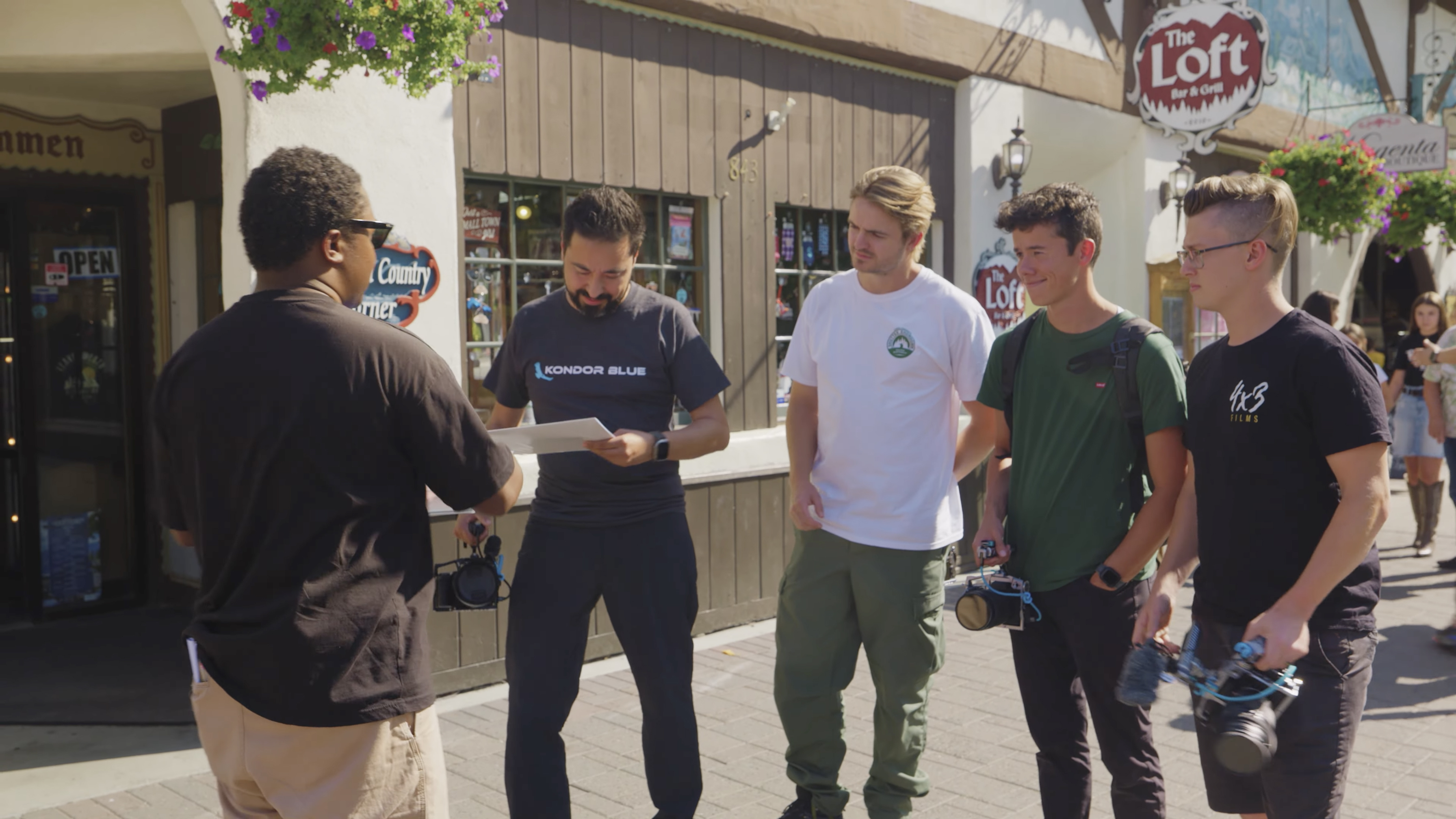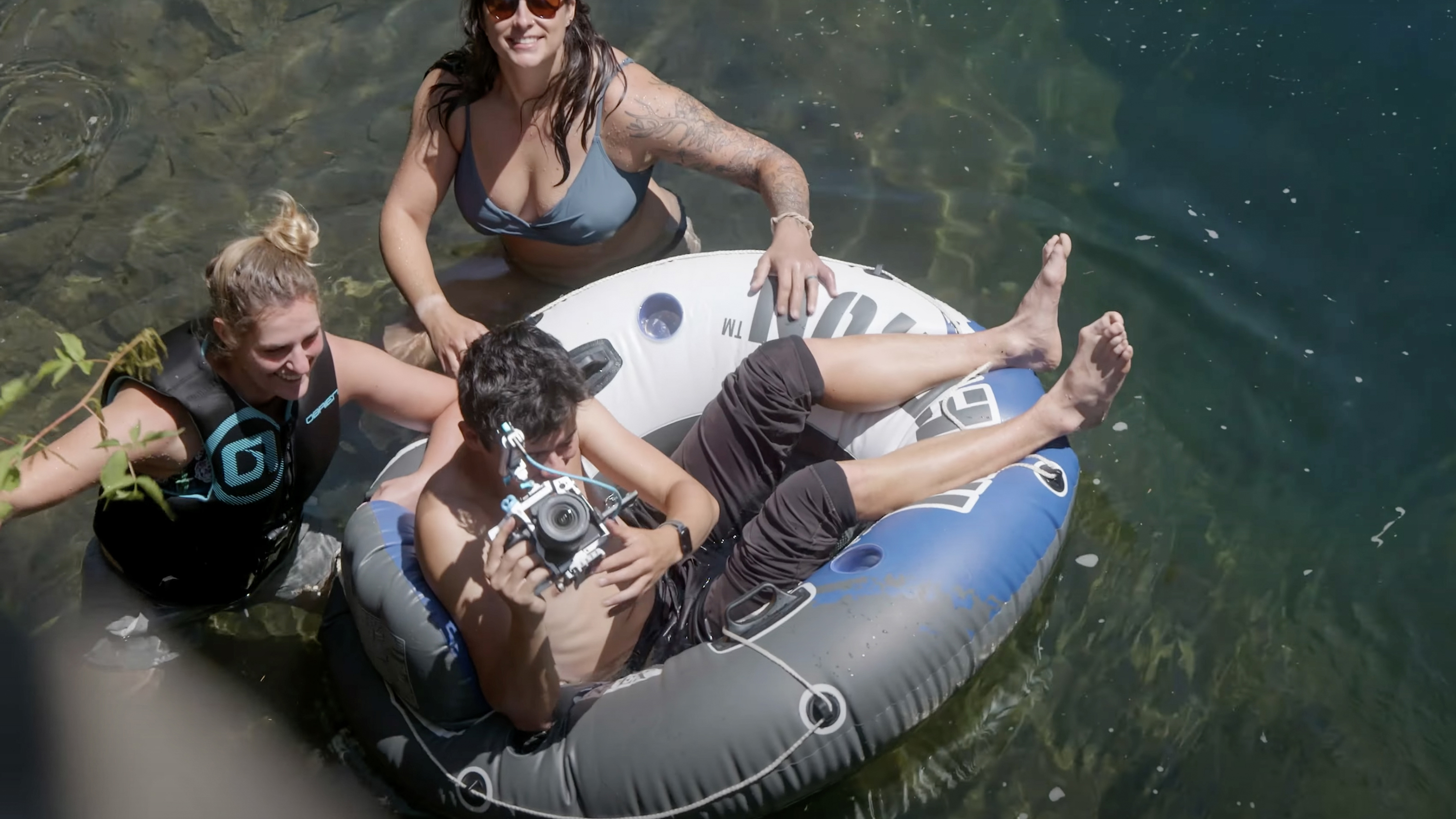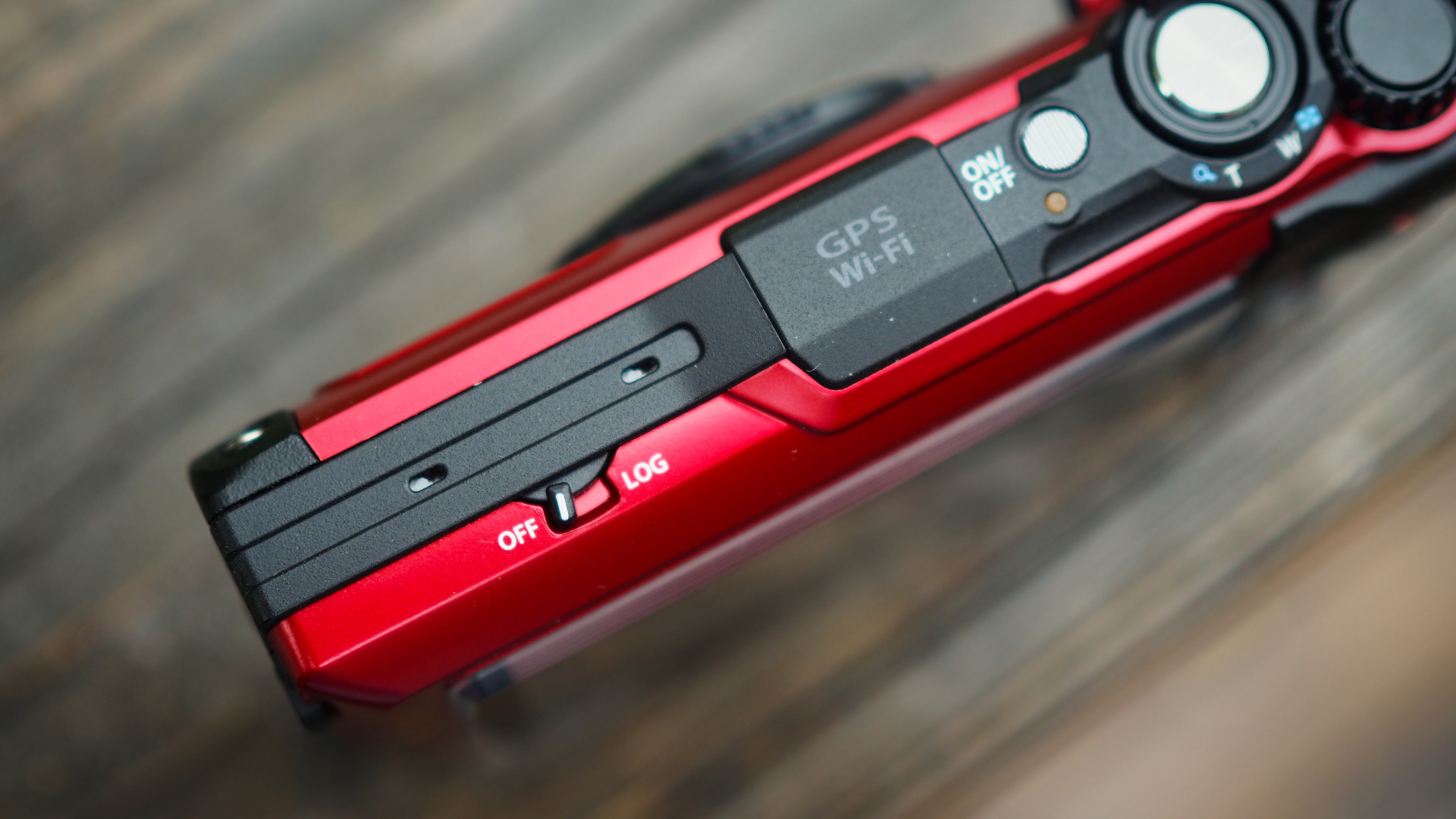Meet the winner of LUMIX Presents: Shutter Showdown – the reality competition that's like "The Bachelor with filmmaking"
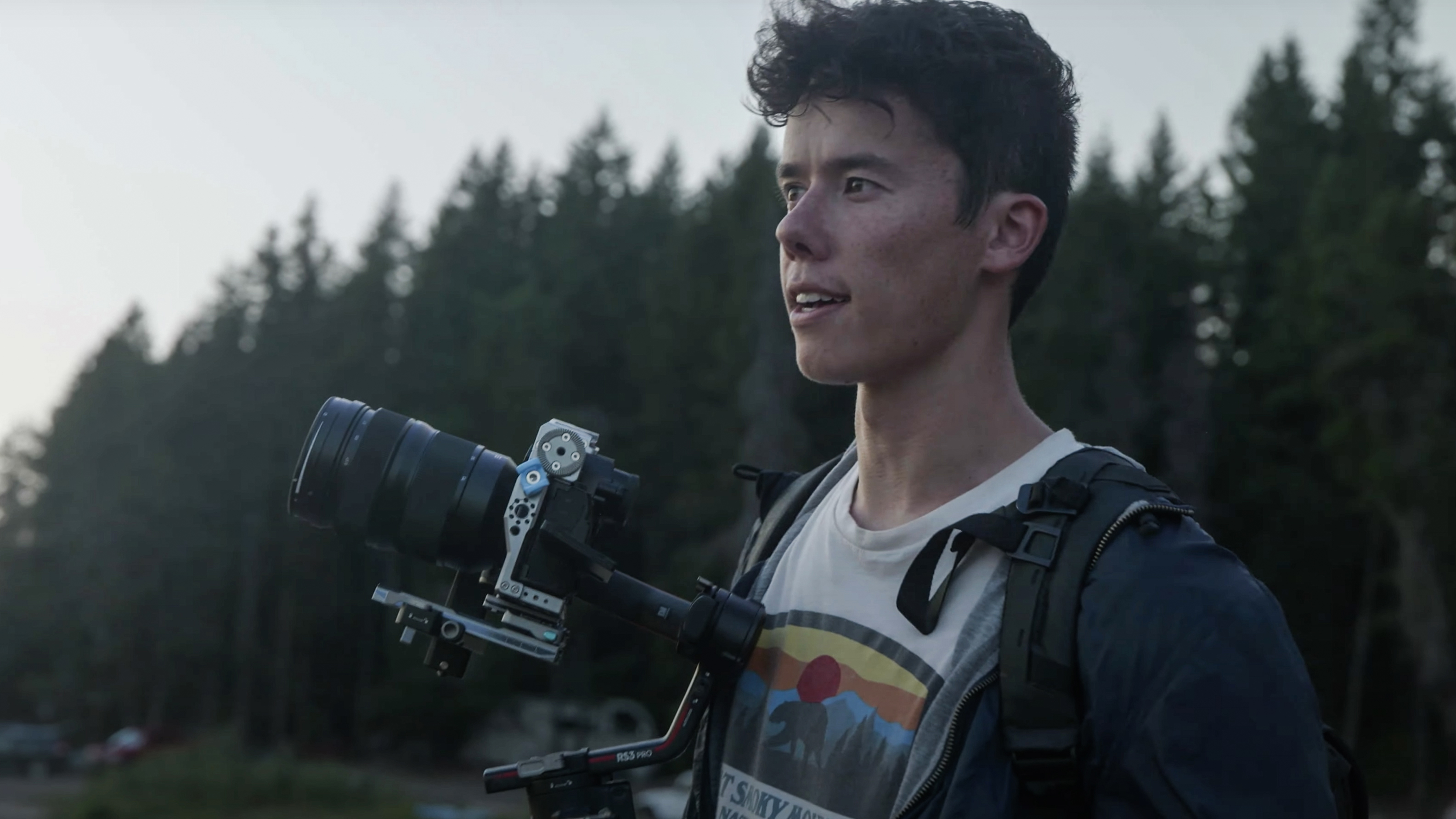
A reality show for creators? That was the thinking behind LUMIX Presents: Shutter Showdown. I called it "The Great British Bakeoff with cameras," while the winner of the show called it "The Bachelor with filming." However you describe it, this full-length reality series debuted on YouTube in November of last year to rave reviews.
Four talented filmmakers stayed in a beautiful lodge in the picturesque Central Cascade Mountains of Washington, where they undertook a series of challenges using the Panasonic LUMIX S5IIX to create short films that were judged on factors like creativity, originality and technical prowess.
For the contestants and viewers alike it was a show unlike any other, and our fingers are crossed for a second season. We were privileged to sit down for a chat with the inaugural winner, Dylan Kato, and camera operator and producer Kyle Rothwell, to chat about their time on the show as well as the broader world of filmmaking.
For people who aren't familiar with your work, explain a little bit of your background, what you do, and how long you've been doing it.
Dylan Kato: I'm a freelance filmmaker from Seattle, Washington, originally, but now based in Utah. And I grew up making little films with my friends in middle school, high school, and then got into landscape photography, which I pursued for about six or seven years. And then got back into doing video work, and now I'm doing freelance – I work on commercials, documentaries, short films, that kind of stuff.
Kyle Rothwell: I'm just like an all-around video person, learned everything from YouTube. Several years ago I was at Buzzfeed as on-camera talent, and I was producing videos, shooting them, editing them. Then I went into traditional advertising, and then I got my role at IMGN Media doing a little bit of both social media and some polished things. So just sort of jack of all trades, internet-trained director.
Dylan, do you remember when you first started filming?
Dylan: Yeah, I was in seventh grade and my parents got me a little DSLR. And I would film these little action films with my friends, like fight scenes, and we'd try to recreate movies and stuff.
When did it kind of go from just being something like, "Hey, this is cool" to "Oh, actually, I'm good at this”?
Dylan: I've always loved movies, and throughout middle school and a little bit of high school I would take these video production classes. And I would tend to have the stronger video of my other classmates, and so my teachers would always tell me that I was talented and that I had a lot of potential. So I just kind of kept pursuing it and I loved doing it. It didn't really feel like work, and I knew that if I could make a career out of that then I would be really happy.
So I've just been pursuing that – I think I've only had one normal job my whole life! I worked at a sandwich shop when I was 16, and then just started taking photos and just working with visual media, whether photos or video. I just loved it and it's giving me a great creative outlet and also paid the bills.
Did either of you have any formal training in videography – and how much do you feel that kind of training is helpful, versus just getting out and shooting?
Dylan: I didn't have any formal training really. I was all self-taught, mostly just learning from YouTube videos. I would watch tutorials, the channel on YouTube Film Riot really gave me a lot of inspiration – loved their stuff. And I went to a year of film school three or four years ago, but I didn't really feel like I could get a whole lot out of it.
I think that a lot of filmmaking can be learned just by yourself and if you have the initiative and want to learn about it, there are resources like out there that are free that you can access and honestly just getting out and shooting and learning how to light things, how to direct. It's just a process of constantly creating and failing and then trying again and succeeding and I guess it there's a lot more that can be learned out of the classroom than in the classroom.
Kyle: I find on YouTube too, especially the last year, the people that are posting things are getting more and more advanced. Before it was mostly just YouTubers showing you how to light a face, and now I'm seeing cinematographers that have been working on huge, million-dollar commercials coming out with information, so it's just getting better and better for people coming up.
How would you describe Shutter Showdown? As a Brit, when I tell people about it, I describe it as, “It's kind of like The Great British Bakeoff, but with cameras.”
Dylan: The only reality show that I've ever seen really was The Bachelor, so I was like, “It's The Bachelor but with making films!” I guess reality competition is the simplest way to describe it, but yeah I've always wanted to be on a reality show, and so it's kind of a dream come true. Gotta check it off my bucket list.
What was the Shutter Showdown experience like? Obviously it’s a show, but you’re there trying to do your best work, but you don’t know what to expect, and there's also a whole bunch of people watching your process in person and online…
Dylan: I was actually pretty excited for that part, honestly. I tend to work best when I'm just in the moment and improvising on the spot, kind of seeing things as I go. I'm not that much of a pre-planner – obviously some things you have to plan for, but I love when it can just be like spontaneous and in the moment and so I wasn't too worried.
I've done a lot of projects where I'll just go out with my friends and be like, “Oh let's just make something!” and then just kind of come up with the idea on the spot. So I love working like that. And it was also comforting to know that the other contestants would have the same restraints as well, and it would just be a good measure of our ability to be creative on the spot.
It looked like the day you were handed the LUMIX S5IIX was probably the first time you'd seen or used that camera.
Dylan: It's the first time getting to grips with it while shooting the show, yeah. I think I shot like two shots at the hotel, just to try it out, but then that first challenge is really the first time I ever used the camera. I hadn't used LUMIX in the past before.
I've seen some of Kyle’s previous work and you were already using LUMIX – I think you were shooting with the GH6?
Kyle: Yes, I've been working with the LUMIX for the last probably two and a half years, so I was really excited when the S5IIX came out. I was very familiar with the camera before, as I was helping to produce and shoot the show, so there were a couple of questions here and there I could answer for Dylan. But it’s a super easy menu system to use, and it's really easy to get to know the camera.
As someone who's worked with the Micro Four Thirds system, what were some of the things that made you excited about using the S5IIX?
Kyle: The biggest thing was full frame, and the autofocus. Especially, you know, shooting, running around and trying to get Dylan's movements while also not slipping over rocks and stuff – I was like really reliant on that autofocus to capture moments. So the autofocus really sold me, and the open gate is so cool because we do so much stuff that needs to be cut down for social, and so not compromising when you're shooting horizontal is great.
What were your first impressions when you got the camera, Dylan, and did you have any preconceptions about LUMIX kit?
Dylan: Having learned a lot about filmmaking from YouTube, I've heard about cameras like the GH5 and I knew that LUMIX was up there in terms of video – so I knew that it was a camera built for video. Off the bat I was really impressed with the open gate recording, the 3:2 in 6K – editing with those files was just fantastic, because I had so much room to crop in or reframe.
There were so many shots – I remember on the second challenge, I was shooting myself driving the car, and I shot it wide on purpose because I wasn't able to really see the screen. And so I shot it wide and then just in post, I just cropped in a little bit and there was no loss of resolution because I was exporting in 4K and I shot in 6K.
For a long time there was this attitude that, “Well, I only upload to YouTube in 1080.” But that flexibility of being able to shoot in 6K and then crop, or do camera movements, that's huge.
Dylan: Yeah, exactly. Back when I was using cameras that shot 1080p, I thought, “Oh, this is great, FullHD.” And then I got a 4K camera and I was like, “Oh, this is great.” And then now 6K, I'm like, okay, I’m never going back now from this – this is it!
You had three other creators with you on Shutter Showdown. How was it, sharing that creative process and creative space with them?
Dylan: It was cool, I feel like everyone had a different background. Like Armando was very technical, he's worked on a lot of big sets. Then Matt, who has his own video production company, he also had a lot of really good knowledge on the spec side and how to use the camera – so I talked to him a lot about how to use it, asked him for some tips as well. And then Fritz is obviously a really talented director. He was hilarious, I loved getting to know Fritz – he was definitely what we needed for the show.
So it was really cool being able to work with everybody in the same spot. We all kind of shared ideas – [except] for the second challenge, the narrative film, no one shared their ideas because everyone's like, “Oh, I got a good idea cooking!” And I was kind of freaking out, like they have all their ideas figured out and I have nothing right now! But it was just a lot of fun to get to work with everybody.
For your narrative challenge, part of that was taking the photograph. How did you find the S5IIX for stills?
Dylan: I mean the photos coming out of it were fantastic – great resolution, very easy to work with in Lightroom. For that challenge, that was the first time I had ever taken a photo with it! So I just made sure I was shooting RAW and I just kind of went for it – I didn't have much time to think about it. It worked out fine and the LUMIX held up great.
For the sports challenge, you had to create a film about a slackliner, which some people may never even have heard of. Plus, you had to shoot it with unfamiliar kit, and make it look cinematic and exciting – that must have been daunting!
Dylan: Yeah that was a little daunting! I was hoping to get mountain biker, honestly, because I heard there was mountain biker and I've shot that before – I feel comfortable with that, I feel like I can make it fast-paced, interesting. And then when I got slackliner, I was very excited as well for that one, but I was more concerned with how do I make this like an action, quick-paced, engaging piece of content when it's just a guy on a wire kind of walking really slowly?
So what I had to do was find ways to make the shots more dynamic and moving. And that's when the idea came to go down into the river, and get pushed around on the little tube by those two ladies that I met. And they were so nice! They came in handy because I think that those shots were some of the best ones that I got in the whole competition, the ones sweeping underneath him with the sun high above him.
The starburst going behind the trees, that was gorgeous.
Dylan: Thank you! Yeah, I was really stoked on that shot. And also just talking with Danny, the slackliner, and hearing his side of it. And before we started filming, I had him walk me through the whole process of how he sets it up and what things he would want to highlight.
And that's how I started, it was him walking up, getting his gear out, setting up the line and then walking in. I thought it was really important just to show his story and his interview. It also helped me make a lot of good decisions, like with editing, because he would say things about the flow state and why he loves the slacklining in the first place.
What are your usual focal lengths in your work, and did you go beyond that for the challenges?
Dylan: For landscapes I like shooting a lot of wide – and the only lens we were given to work with was the 24-70 f/2.8. And then I wasn't sure if we were allowed to use this, but the lens they gave us that had the word “Slackliner” on it [to announce the challenge], I used that one because it was a 20-60mm, so a bit wider.
I used that for the shots of him pulling the rope out the bag. It was a little bit more compact, which helped, And I used that lens also for the river shots going underneath him, just to get as wide as I possibly could. Even though it wasn't a Pro series lens like the 24-70, it was wide enough to make it worth it.
I shoot a lot of vintage lenses normally, though I wasn't allowed to use those on the competition. I would have loved to, but I love going on eBay and just purchasing vintage glass from the 60s and it's like 100, 200 bucks for a nice lens that’s f/2 and the bokeh is beautiful – but the 24-70 was just perfectly sharp and exactly what I needed.
It’s interesting you mention the kit lens, because it used to be kind of the booby prize – you get a camera, it comes with this lens, you replace it as soon as you can. But modern kit lenses are really good, and you can get great shots with them.
Dylan: Yeah, for me, the only thing that mattered was the focal length at that point. As long as the lens is sharp, you can get a good image. And the other contestants actually were confused at why I was using it. They're like, "Why he's using the kit lens?" They were so against using any kit lens and they only wanted to use the 24-70, and I was like, well, maybe I shouldn't be using it. But then in the end, I was really glad I did.
As someone who uses vintage lenses, and filmmakers are used to manual focus, how did you find the new phase detect autofocus system on the S5IIX?
Dylan: Honestly I prefer manual lenses because that's what I'm used to – the vintage lenses. I just like doing everything manually and that's what I'm most comfortable with. But for gimbal stuff, solo operation, I can't really control focus when I'm following somebody.
So I just tapped their face and had the AF take care of that. I was really impressed with the Face Detect on that camera. It detects which eye you’re looking at, then someone can turn around and it'll get their face when they turn back – I was like, "Wow, this is really something!"
To wrap things up, if you could give one piece of advice to someone just starting out – or to yourselves, when you were starting out – what would you say?
Dylan: I would probably give the advice to just keep making stuff. I think a big struggle for a lot of creatives is perfectionism, and struggling with having that creative drive and inspiration continually is a really tough thing. I'll admit, after Shutter Showdown I was burnt out for a month! I used all my creativity in those three days and I was like, okay, I'm taking a break now.
But even when you're feeling uninspired, just getting a camera in your hand and making anything can spark these creative juices that will just, it just fills your cup and you just, um, get the next inspiration for the next project. And you just got to keep going and keep making stuff and if you get too hung up on it being perfect then it's never gonna get done. I have so many projects that I say, okay, I'm gonna do this once I'm all planned and it's all perfect and everything.
But the projects that I actually make and finish and then turn out really good are the ones that I’m like, I'll just do this just for fun, I'll just see how this goes. And it turns out better than I expect usually! So I'd say just keep creating and keep using cameras and you'll learn as you go. Go have fun.
Kyle: I guess when I first started making videos I thought it was too late for me to begin. I started after college and I felt like everyone else had a huge jump on me, and they knew more than me and they're more creative than I will ever be, so I almost didn't bother because I thought it would be a waste of time.
But similar to what Dylan's saying, I just kept making stuff and I love the process so much, and then eventually people start to take notice and they want to work with you more, and it all just snowballs. The more stuff you do that you're passionate about, the more people that'll find you, and there's a place for your creativity.
To view the full LUMIX Presents: Shutter Showdown series, visit LUMIX Shutter Showdown (panasonic.com).
The best camera deals, reviews, product advice, and unmissable photography news, direct to your inbox!
Digital Camera World is one of the leading authorities on camera and photography news, reviews, techniques, tutorials, comparisons, deals and industry analysis. The site doesn't just specialize in cameras, but all aspects of photography, videography and imaging – including camera phones, gimbals, lenses, lighting, editing software, filters, tripods, laptops, printers, photo books, desks, binoculars and more.
Whether you're using, looking to buy or trying to get the most out of a compact camera, action camera, camera drone, cinema camera, beginner camera or professional camera, Digital Camera World has a roster of experts with combined experience of over 100 years when it comes to cameras, photography and imaging.

